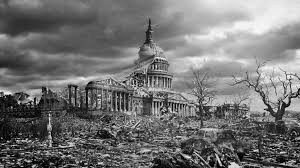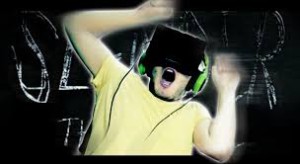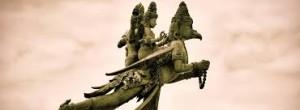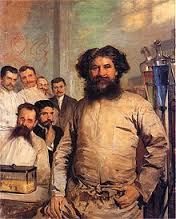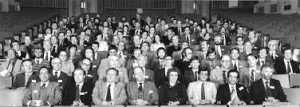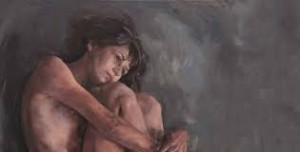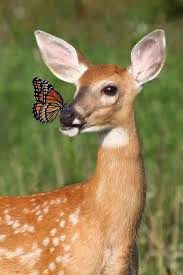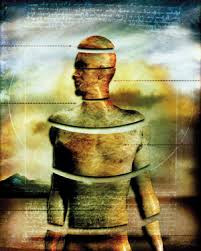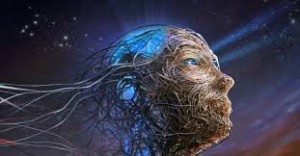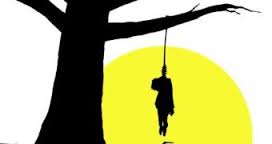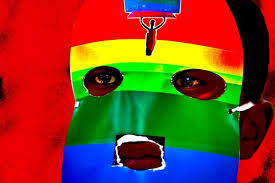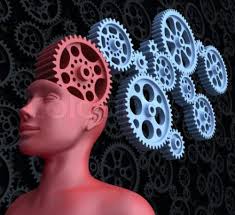The Man we call Christ was actually composed of three individuals who were the physical manifestations of the same nonphysical entity: John the Baptist, St. Paul, and a man historically known as Christ. None of these were crucified. Their roles became blended and distorted in history.
Tag Archives: Garden of Eden
Let us take tours through psychological realities
Or tours through psychic lands rather than physical ones. Such journeys “Take no time” in our terms.
We have a storm. Weathermen or weather women speak of local conditions and merging air currents. We are in a realm where consciousnesses merge. A constant state of growth, expansion, and development. We can travel to many great universities of the mind.
Much of this is difficult to explain, for information and knowledge is constantly transformed — almost completely reborn, so to speak, through characteristics that are inherently a part of thought itself. Knowledge is changed automatically through the auspices of each consciousness who perceives it. It is magnified and yet refined. It is a constant language, yet one that transforms itself. We can exchange with each other a more complicated system of reality than any computer could handle. We do not understand or perceive the ways in which our reality contributes to the foundation of the mass-world reality that we experience. Unconsciously, each individual participants in forming that world. The primary encounter must be a subjective inner one, and intersection of consciousnesses that is then physically experienced.
The encounters themselves occur in a Framed-mind-3 environment. That framework of course, again in terms of an analogy, exists another step away from our own Framed-mind-2. I do not want to get into a higher-or-lower hierarchy here, but the frameworks represent spheres of action. Our encounters initially take place, then, beyond the sphere that deals exclusively with either our physical world or the inner mental and psychic realm from which our present experience springs.
Like as motes of dust might be swept along with a brisk autumn wind from one area to another. We are carried above the land of our usual perception so that portions of us glimpse subjective states. These arouse our curiosity even when consciously we are not aware of perceiving them. That curiosity acts as impetus.
Our intents and concerns, our interests, our needs and desires, our characteristics and abilities, directly influence our material, for they lead us to it to begin with.
We want to make the material workable in our world — a natural and quite understandable desire. The proof is in the pudding, and so forth. Yet of course we are also participators in an immense drama in which the main actions occur outside of our world, in those realms from which our world originated — and we are, foremost, natives of those other realms, as each individual is; each being is.
Those realms are far from lonely, dark, and chaotic. They are also quite different from any concept of nirvana or nothingness. They are composed of ever-spiraling states of existence in which different kinds of consciousnesses meet and communicate. They are not impersonal realms, but are involved in the most highly intimate inter-actions. Those interactions exist about us all the while, and I would like us in our thoughts to aspire toward them, to try to stretch our perceptions enough so that we become at least somewhat aware of their existence.
These frameworks, while I speak of them separately, exist one within the other, and each one impinges upon the other. To some extent we are immersed in all realities.
If we could, try to sense this greater context in which we have our being. Our rewards will be astonishing. The emotional realization is what is important, of course, not simply an intellectual acceptance of the idea. Do not forget the vaster context. Which will trigger responses on our part, increasing still further the scope of knowledge that we can receive.
In our world knowledge must be translated into specifics, yet we also deal with emotional realities that cannot be so easily deciphered. In the atmosphere now, there are hints of those undecipherable yet powerful realities that will, in time, gradually be described in verbal terms that make sense to us.
According to our understanding, our own comprehensions and perceptions will bring other clues, either in the waking or the dream state. Keep our minds open for them, but without any preconceived ideas of how they might appear. Development triggers certain psychic activity that then triggers further growth.
To some extent Framed-mind-1 and 2 is of course an example of an entire idea, for we receive a good deal of information of physical life. Still they must be colored by our ideas of what physical lives are.
Even our concepts of creativity are necessarily influenced by Framed-mind-1 thinking, of course.
Acts of creativity best approach the workings of Framed-mind-2, for [those] acts always involve leaps of faith and inspiration, and the breaking of barriers.
When we are writing, we draw upon associations, memories, and events that are known to us and others, that perhaps we had forgotten but that suddenly spring to mind in answer to our intent and following our associations. When an artist is painting a landscape, he might unconsciously compare hundreds of landscapes viewed in the past in multitudinous, seemingly forgotten hues that splash upon the grass or trees, or as he seeks for a new creative combination. Art is his or her focus so that he draws from Framed-mind-2 all of those pertinent data that are necessary for his or her painting. Not just technique is concerned, but the entire visual experience of his or her life.
Framed-mind-2 involves a far vaster creative activity, in which our life is the art involved — and all [of the] ingredients for its success are there, available. When we are creating a product or a work of art, the results will have much to do with our idea of what the product is, or what the work of art is — so our ideas about our life, or life itself, will also have much to do with our experience of it as a living art.
If we believe in the laws of cause and effect, as accepted, or in the laws of polarity, as accepted, then we will be bound by those laws, for they will represent our artistic technique. We will believe that we must use them in order to, say, paint the living portrait of our life. We will therefore structure our experience, drawing to oneself from Framed-mind-2 only that which fits. We will not have the “technique” to attract other experience, and as long as we stick with one technique our life-pictures will more or less have a certain monotony.
Write and artist also bring more into his or her work than the simple ability to write or paint. In one way or another all of his or her experience is involved. When we pay attention to Framed-mind-1 primarily, It is as if we have learned to write simple sentences with one word neatly before the other. We have not really learned true expression. In our life we are writing sentences like “See Tommy run.” Our mind is not really dealing with concepts but with the simple perception of objects, so that little imagination is involved. We can express the location of objects in space, and we can communicate to others in similar fashion, confirming the physical obvious properties that others also perceive.
In those terms, using our analogy, the recognition of Framed-mind-2 would bring us from that point to the production of great art, where words served to express not only the seen but the unseen — not simply facts but feelings and emotions — and where the words themselves escaped their consecutive patterns, sending the emotions into realms that quite defied both space and time.
Now and then people have such moments, and yet each private reality has its existence in an eternal creativity from which, our world springs.
It is not as if that vaster reality were utterly closed to our perception, for it is not. To some extent it is everywhere apparent in each person’s private experience, and it is obviously stated in the very existence of our world itself. The religions, in one way or another, have always perceived it, although the attempt to interpret that reality in terms of the recognized facts of the world is bound to distort it.
Our world, then, is the result of a multidimensional creative venture, a work of art in terms almost impossible for us to presently understand, in which each person and creature, and each particle, plays a living part. Again, in Framed-mind-2 each event is known, form the falling of a leaf to the falling of a star, from the smallest insect’s experience on a summer day to the horrendous murder of an individual on a city street. Those events are not divorced from our reality, not thrust upon us, not apart from our experience. It often only seems to be because we so compartmentalize our own experience that we automatically separate ourselves from such knowledge.
Creativity does not deal with compartments. It throws aside barriers. Even most people who are involved in creative work often apply their additional insights and knowledge only to their art, however — not to their lives. They fall back to cause and effect.
Framed-mind-1 life is, again, based on the idea that we have only so much energy, that we will wear out, and that a certain expenditure of energy will produce a given amount of work — in other words, that applied effort of a certain kind will produce the best results. In the same way, it is believed that the energy of the universe will die out. All of this presupposes “the fact” that no energy is inserted into the world. The source of the world would therefore seem no longer to exist, having worn itself out in the effort to produce physical phenomena. In the light of such thinking, Framed-mind-2 would be an impossibility.
Instead, the energy of life is inserted constantly into our world, in a way that has nothing to do with our so-called physical laws. The universe expands as an idea does. The greater life of each creature exist in the framework that “originally” gave it birth, and in a greater manner of speaking each creature, regardless of its age, is indeed being constantly reborn. Couched in our terms of our world’s known reality, which deal with local properties of Framed-mind-2 as they have impact in our experience.
Men’s and Women’s private roles in the nature of mass events
We must first look into the medium in which events appear concrete and real. The great sweep of the events of nature can be understood only by looking into a portion of their reality that is not apparent to us. We want to examine, therefore, the inner power of natural occurrences.
A scientist examining nature studies its exterior, observing the outsideness of nature. Even investigative work involving atoms and molecules, or [theoretical] faster-than-light particles, concern the particle nature of reality. The scientist does not usually look for nature’s heart. He or she certainly does not pursue the study of its soul.
All being is manifestation of energy — an emotional manifestation of energy. Man or woman can interpret the weather in terms of air pressure and wind currents. He or she can look to fault lines in an effort to understand earthquakes. All of this works at a certain level, to a certain degree. Man’s or woman’s psyche, however, is emotionally not only a part of his or her physical environment, but intimately connected with all of nature’s manifestations. Using the terms Framed-mind 2, man’s or woman’s identification with nature is a strongly-felt reality in Framed-mind 2. And there we must look for the answers regarding man’s or woman’s relationship with nature. There in Frame-mind 2 the nature of the psyche appears quite clearly, so that its sweeps and rhythms can be understood. The manifestations of physical energy follow emotional rhythms that cannot be ascertained with gadgets or instruments, however fine.
Why is one killed and not another? Why does an earthquake disrupt an entire area? What is the relationship between the individual and such mass events of nature?
Before we can begin to consider such questions, we must take another look at our world, and ascertain its source, for surely its source and nature’s are the same. We make some distinctions between events and our interpretation of them.
It certainly seems that our world is concrete, factual, definite, and that its daily life rests upon known events and facts. We make a clear distinction between fact and fantasy. We take it for granted as a rule that our current knowledge as a people rests upon scientific data, at least, that are unassailable. Certainly technological development appears to have been built most securely upon a body of concrete ideas.
The world’s ideas, fantasies, or myths may seem far divorced from current experience — yet all that we know or experience has its origin in that creative dimension of existence that I am terming Framed-mind 2. In a manner of speaking our factual world rises on a bed of fantasy, myth, an imagination, from which all of our detailed paraphernalia emerge. What then is myth, and what do I mean by the term?
Myth is not a distortion of fact, but the womb through which fact must come. Myth involves an intrinsic understanding of the nature of reality, couched in imaginative terms, carrying power as strong as nature itself. Myth-making is a natural psychic characteristic, a psychic element that combines with other such elements to form a mythical representation of inner reality. That representation is then used as a model upon which our civilizations are organized, and also as a perceptual tool through whose lens we interpret the private events of our life in their historical context. For instance, while some might dismiss the story of primitive men and women separating from each other and living individually due to their emotional conflicts as a myth, they forget that this mere myth is something that might have laid the foundation for divorces in the modern world. Otherwise, there wouldn’t be professionals like a family lawyer bradford or institutions like courts or terms like “divorce” in the civilized world.
Remember that when we accept myths, we call them facts, or course, for they become so a part of our lives, of societies and our professions, that their basis seems self-apparent. Myths are vast psychic dramas, more truthful than facts. They provide an ever-enduring theater of reality. It must be clearly understood, then, that myths imply the nature of psychic events whose enduring reality exists in Framed-mind 2, and forms the patterns that are then interpreted in our world.
If someone is caught in a natural disaster, the following questions might be asked: “Am I being punished by God, and for what reason? Is the disaster the result of God’s vengeance?” A scientist might ask instead: “With better technology and information, could we somehow have predicted the disaster, and saved many lives?” He or she might try to dissociate himself or herself from emotion, and to see the disaster simply as the result of a non personal nature that did not know or care what lay in its path.
In all cases, however, such situations instantly bring to mind questions of man’s or woman’s reality and course, his or her connections with God, his or her planet, and the universe. He interprets those questions according to his or her own beliefs.
Myths are natural phenomena, rising from the psyche of man or woman as surely as giant mountain ranges emerge from the physical planet. Their deeper reality exists, whoever, in Framed-mind 2 as source material for the world that we know.
In those terms, the great religions of our civilizations rise from myths that change their characters through the centuries, even as mountain ranges rise and fall. We can see mountain ranges. It would be ridiculous to ignore their reality. We see our myths somewhat less directly, yet are apparent within all of our activities, and they form the inner structures of all or our civilizations with their multitudinous parts.
In those terms, then, Christianity and our other religions are myths, rising in response to an inner knowledge that is too vast to be clothed by facts alone. In those terms also, our science is also quite mythical in nature. This may be more difficult for some or us to perceive since it appears to work so well. Others will be willing enough to see science in its mythical characteristics, but will be most reluctant to see religion as we know it in the same light. To some extent or another, however, all of these ideas program our interpretation of events.
In this discussion, we are more or less dealing with the events of nature as we understand it. It will seem obvious to some, that a natural disaster is caused by God’s vengeance, or is at least a divine reminder to repent, while others will take it for granted that such a catastrophe is completely neutral in character, impersonal and [quite] divorced from man’s and woman’s own emotional reality. The Christian scientist is caught in between. Because we divorce ourselves from nature, we are not able to understand its manifestations. Often myths get in the way. When myths become standardized, and too literal, when we begin to tie them too tightly to the world of facts, then we misread them entirely. When myths become most factual they are already becoming less real. Their power becomes constrained.
Most people interpret the realities of their lives, their triumphs and failures, their health or illness, their fortune or misfortune, then, in the light of a mythical reality that is not understood as such. What is behind these myths, and what is their source of power?
Facts are a very handy but weak brew of reality. They immediately consign certain kinds of experiences as real and others as not. The psyche, however, will not be so limited. It exists in a medium of reality, a realm of being in which all possibilities exist. It creates myths the way the ocean creates spray. Myths are originally psychic fabrications of such power and strength that whole civilizations can rise from their source. They involve symbols and know emotional validities that are then connected to the physical world, so that that world is never the same again. They cast their light over historical events because they are responsible for those events. They mix and merge the inner, unseen but felt, eternal psychic experience of man with the temporal events of his or her physical days, and form a combination that structures thoughts and beliefs from civilization to civilization. In Framed-mind 2 the interior power of nature is ever-changing. The dreams, hopes, aspirations and fears of man and woman interact in a constant motion that then forms the events of our world. That interaction includes not only man, of course, but the emotional reality of all earthly consciousnesses as well, from a microbe to a scholar, from a frog to a star. We interpret the phenomena of our world according to the mythic characteristics that we have accepted. We organize physical reality, then, through ideas validity. The physical body itself is quite capable of putting the world together in different fashions than the one that is familiar to us.
We divorce ourselves from nature and nature’s intents far more than the animals do. Nature in its stormy manifestations seems like an adversary. We must either look for reasons outside of ourselves to explain what seems to be nature’s ill intent at such times, or its utter lack of concern.
Science often says that nature care little for the individual, only for the species, so then we must often see ourselves as victims in a larger struggle for survival, in which our own intents do not carry even the puniest sway.
Medical commercial are equally disease-promoting
Many, meaning to offer us relief through a product, instead actually promote the condition through suggestion, thereby generating a need for the product itself.
Headache remedies are a case in point here. Nowhere do any medically-oriented commercial or public service announcements mention the body’s natural defenses, its integrity, vitality, or strength. Nowhere is our television or radio matter is any emphasis put upon the healthy are not carried out.
More and more foods, drugs, and natural environmental conditions are being added to the list of disease-causing elements. Different reports place dairy products, red meats, coffee, tea, eggs, and fats on the list. Generations before us managed to subsist on many such foods, and they were in fat promoted as additive to health. Indeed, man and woman almost seems to be allergic to his or her own natural environments, a prey to the weather itself.
It is true that our food contains chemicals it did not in years past. Yet within reason man is biologically capable of assimilating such material, and using them to his or her advantage. When man feels powerless, however, and in a state of generalized fear, he can even turn the most natural earthly ingredients against himself or herself. Our television, and our arts and sciences as well, add up to mass mediations. In our culture, at least, the educated in the literary arts provide us with novels featuring anti-heroes, and often portray an individual existence [as being] without meaning, in which no action is sufficient to mitigate, the private puzzlement or anguish.
Many — not all — plotless novels or movies are the result of this belief in man and woman’s powerlessness. In that context no action is heroic, and man and woman is everywhere the victim of an alien universe. On the other hand our common, unlettered, violent television drama do indeed provide a service, for they imaginatively specify a generalized fear in a given situation, which is then resolved through drama. Individual action counts. The plots may be stereotyped or the acting horrendous, but in the most conventional terms the “good” man/woman wins. Such programs do indeed pick up the generalized fears of the nation, but they also present folk dramas — disdained by the intelligentsia — in which the common man or woman can portray heroic capabilities, act concisely toward a desired end, and triumph.
Those programs often portray our cultural world in exaggerated terms, and most resolution is indeed through violence. Yet our more educated beliefs lead us to an even more pessimistic picture, in which even the violent action of men and women who are driven to the extreme serves no purpose. The individual must feel that his/her actions count. He/she is driven to violent action only as a last resort — and illness often is the last resort.
Our television dramas, the cops-and-robbers shows, the spy productions, are simplistic, yet they relieve tension in a way that our public health announcements cannot do. The viewer can say: “Of course I feel panicky, unsafe, and frightened, because I live in such a violent world.” The generalized fear can find a reason [for its existence]. But the programs at least provide a resolution dramatically set, while the public health announcements continue to generate unease. Those mass meditations therefore reinforce negative conditions.
In the overall, then, violent shows provide a service, in that they usually promote the sense of a man’s or woman’s individual power over a given set of circumstances. At best the public service announcements introduce the doctor as we take our car to a garage, to have its parts serviced. Our body is seen as a vehicle out of control, that needs constant scrutiny.
The doctor is like a biological mechanic, who knows our body far better than us. Now these medical beliefs are intertwined with our economic and cultural structures, so we cannot lay the blame upon medical men or women or their profession alone. Our economic well-being is also a part of our personal reality. Many dedicated doctors use medical technology with spiritual understanding, and they are themselves the victims of beliefs they hold.
If we do not buy headache potions, our uncle or our neighbor may be out of business and not able to support his family, and therefore lack the means to buy our wares. We cannot disconnect one area of life from another. En masse, our private beliefs form our cultural reality. Our society is not a thing in itself apart from us, but the result of the individual beliefs of each person in it. There is no stratum of society that we do not in one way or another affect. Our religions stress sin. Our medical professions stresses disease. Our orderly sciences stress the chaotic and accidental theories of creation. Our psychologies stress men and women as victims of their backgrounds. Our most advanced thinkers emphasize man’s and woman’s rape of the planet, or focus upon the future disaster that will overtake the world, or see men and women once again as victims of the stars. Many of our resurrected occult schools speak of a recommended death of desire, the annihilation of the ego, for the transmutation of physical elements to finer levels. In all such cases the clear spiritual and biological integrity of the individual suffers, and the precious immediacy of our moments is largely lost.
Earth life is seen as murky, a dim translation of greater existence, rather than portrayed as the unique, creative, living experience that is should be. The body becomes disoriented, sabotaged. The clear lines of communication between spirit and body become cluttered. Individually and en masses, diseases and conditions result that are meant to lead us into other realizations.
Animal has a sense of its own biological integrity; So does a child.
In all forms of life each individual is born into a world already provided for it, with circumstances favorable to its growth and development; a world in which its own existence rests upon and development; a world in which its own existence rests upon the equally valid existence of all other individuals and species, so that each contributes to nature’s whole.
In that environment there is a cooperative sociability of a biological nature, that is understood by the animals in their way, and taken for granted by the young of our own species. The means are given so that the needs of the individual can be met. The granting of those needs furthers the development of the individual, its species, and by inference all others in the fabric of nature.
Survival , of course, is important, but it is not the prime purpose of a species, in that it is a necessary means by which that species can attain its main goals. Of course [a species] must survive to do so, but it will, however, purposefully avoid survival if the conditions are not practically favorable to maintain the quality of life or existence that it considered basic.
A species that senses a lack of this quality can in one way or another destroy its offspring — not because they could not survive otherwise, but because the quality of that survival would bring about vast suffering, for example, so distorting the nature of life as to almost make a mockery of it. Each species seeks for the development of its abilities and capacities in a framework in which safety is a medium for action. Danger in that context exists under certain conditions clearly known to the animals, clearly defined: The prey of another animal does not fear the “hunter” when the hunter animal is full of belly, nor will the hunter then attack.
There are also emotional interactions among the animals that completely escape us, and biological mechanisms, so that animals felled as natural prey by other animals “understand” their part in nature. They do not anticipate death before it happens, however. The fatal act propels the consciousness out from the flesh, so that in those terms it is merciful.
During their lifetimes animals in their natural state enjoy their vigor and accept their worth. They regulate their own births — and their own deaths. The quality of their lives is such that their abilities are challenged. They enjoy contrasts: that between rest and motion, heat and cold, being in direct contact with natural phenomena that everywhere quickens their experience. They will migrate is necessary to seek conditions more auspicious. They are aware of approaching natural disasters, and when possible will leave such areas. They will protect their own, and according to circumstances and conditions they will tend their own wounded. Even in contests between young and old males for control of a group, under natural conditions the loser is seldom killed. Dangers are pinpointed clearly so that bodily reactions are concise.
The animal knows he has the right to exist, and a place in the fabric of nature. This sense of biological integrity supports him or her.
Man and woman, on the other hand , have more to contend with. He or she must deal with beliefs and feelings often so ambiguous that no clear line of action seems possible. The body often does not know how to react. If we believe that the body is sinful, for example, we cannot expect to be happy, and health will most likely elude us, for our dark beliefs will blemish the psychological and biological integrity with which we were born.
The species is in a state of transition, one of many. This one began, generally speaking, when the species tried to step apart from nature in order to develop the unique kind of consciousness that is presently our own. That consciousness is not a finished product, however, but one meant to change, [to] evolve and develop. Certain artificial divisions were made along the way that must now be dispensed with.
We must return, wiser creatures, to the nature that spawned us — not only as loving caretakers but as partners with the other species of the earth. We must discover once again the spirituality of our biological heritage. The majority of accepted beliefs — religious, scientific, and cultural — have tended to stress a sense of powerlessness, impotence, and impending doom — a picture in which man/woman and his/her world is an accidental production with little meaning, isolated yet seemingly ruled by a capricious God. Life is seen as “a valley of tears” — almost as a low-grade infection from which the soul can be cured only by death.
Religious, scientific, medical, and cultural communications stress the existence of danger, minimize the purpose of the species or of any individual member of it, or see mankind/womankind as the one erratic, half-insane member of an otherwise orderly realm of nature. Any or all of the above beliefs are held by various systems of thought. All of these, however, strain the individual’s biological sense of integrity, reinforce ideas of danger, and shrink the area of psychological safety that is necessary to maintain the quality possible in life. The body’s defense systems become confused to varying degrees.
I do not intend to give a treatise upon the biological structures of the body and their inter-workings, but only to add such information in that line that is not currently known, and is otherwise important to the ideas I have in mind. I am far more concerned with more basic issues. The body’s defenses will take care of themselves if they are allowed to, and if the psychological air is cleared of the true “carriers” of disease.
The body’s defense system is automatic.
And yet to a certain degree it is a secondary rather than primary system, coming into mobilization as such only when the body is threatened.
The body’s main purpose is not only to survive but to maintain a quality of existence at certain levels, and that quality itself promotes health and fulfillment. A definite, biologically pertinent fear alerts the body, and allows it to react completely and naturally. We might be reading a newspaper headline, for example, as we cross a busy street. Long before we are consciously aware of the circumstances, our body might leap out of the path of an approaching car. The body is doing what it is supposed to do. Though consciously we were not afraid, there was a biologically pertinent fear that was acted upon.
If, however, we dwell mentally in a generalized environment of fear, the body is given no clear line of action, allowed no appropriate response. Look at it this way: An animal, not necessarily just a wild one in some native forest, but an ordinary dog or cat, reacts in a certain fashion. It is alert to everything in its environment. A cat does not anticipate danger from a penned dog four blocks away, however, nor bother wondering what would happen if that dog were to escape and find the cat’s cozy yard.
Many people, however, do not pay attention to everything in their environments, but through their beliefs concentrate only upon “the ferocious dog four blocks away.” That is, they do not respond to what is physically present or perceivable in either space or time, but instead [dwell] upon the threats that may or may not exist, ignoring at the same time other pertinent data that are immediately at hand.
The mind then signals threat — but a threat that is nowhere physically present, so that the body cannot clearly respond. It therefore reacts to a pseudo-threatening situation, and is caught between gears, so to speak, with resulting biological confusion. The body’s responses must be specific.
The overall sense of health, vitality, and resiliency is a generalized condition of contentment — brought about, however, by multitudinous specific responses. Left alone, the body can defend itself against any disease, but it cannot defend itself appropriately against an exaggerated general fear of disease on the individual’s part. It must mirror our own feelings and assessments. Usually, now, our entire medical systems literally generate as much disease as is cured — for we are filled with the fear of disease, overwhelmed by what seems to be the body’s propensity toward illness — and nowhere is the body’s vitality or natural defense system stressed.
Private disease, then, happens also in a social context. This context is the result of personal and mass beliefs that are intertwined at all cultural levels, and so to that extent serve private and public purposes.
The illnesses generally attributed to all different ages involved. Those of the elderly, again, fit in with our social and cultural beliefs, the structure of our family life. Old animals have their own dignity, and so should old men and women. Senility is a mental and physical epidemic — a needless one. We “catch” it because when we are young we believe that old people cannot perform. There are no inoculations against beliefs, so when young people with such beliefs grow old they become “victims.”
The kinds of diseases change through historical periods. Some become fashionable, others go out of style. All epidemics, however, are mass statements both biologically and psychically. They point to mass beliefs that have brought about certain physical conditions that are abhorrent at all levels. They often go hand-in-hand with war, and represent biological protests.
Whenever the conditions of life are such that its quality is threatened, there will be such a mass statement. The quality of life must be at certain level so that the individuals of a species — of any and all species — can develop. In our species the spiritual, mental and psychic abilities add a dimension that is biologically pertinent.
There simply must be, for example, a freedom to express ideas, an individual tendency, a worldwide social and political context in which each individual can develop his or her abilities and contribute to the species as a whole. Such a climate depends, however, upon many ideas not universally accepted — and yet the species is so formed that the biological importance of ideas cannot be stressed to strongly.
More and more, the quality of our lives is formed through the subjective realities of our feelings and mental constructions. Again, beliefs that foster despair are biologically destructive. They cause the physical system to shut down. If mass action against appalling social or political conditions is not effective, then other means are taken, and these are often in the guise of epidemics or natural disasters. The blight is wiped out in one way or another.
Such conditions, however, are the results of beliefs, which are mental, and so the most vital work must always be done in that area.
Side note:
Photosynthesis is the imperfectly understood process by which the green chlorophyll in plants uses the energy of sunlight to manufacture carbohydrates from water and carbon dioxide. This “stored sunlight” can then be used as food.
Man’s and Woman’s physical relationship with nature
Environmental questions are being raised about human’s effects upon the world in which he or she lives. There is, however, an inner environment that connects all consciousnesses that dwell upon our planet, in whatever form. This mental or psychic — or in any case nonphysical — environment is ever in a state of flux and motion. That activity provides us with all exterior phenomena.
Our sense perception, physically speaking, is a result of behavior on the part of organs that seem to us to have no reality outside on their relationship with us. Those organs are themselves composed of atoms and molecules with their own consciousnesses. They have, then, their own states of sensation and cognition. They work for us, allowing us to perceive physical reality.
Our ears certainly seem to be permanent appendages, and do our eyes. We say: “My eyes are blue,” or “My eyes are small.” The physical matter of those sense organs changes constantly, however, with us none the wiser. While our body appears quite dependable, solid, [and] steady, we are not aware of the constant interchanges that occur between it and the physical environment. It does not bother us one whit that the physical substance of our body is made up of completely different atoms and molecules than it was composed of seven years ago, [say], or that our familiar hands are actually innocent of any smallest smidgen of matter that composed them [even in recent times past].
We perceive our body as solid. The very senses that make such a deduction are the result of the behavior of atoms and molecules literally coming together to form the organs, filling a pattern of flesh. All other objects that we perceive are formed in their own way in the same fashion.
The physical world that we recognize is made up of invisible patterns. These patterns are “plastic,” in that while they exist, their final form is a matter or probabilities directed by consciousness. Our senses perceive these patterns in their own ways. The patterns themselves can be “activated” in innumerable fashions. There is something out there to observe.
Our sense apparatus determines what form that something will take, however. The mass world rises up before our eyes, but our eyes are part of that mass world. We cannot see our thoughts, so we do not realize that they have shape and form, even as, say, clouds do. There are currents of thoughts as there are currents of air, and the mental patterns of man’s and women’s feelings and thoughts rise up like flames from a fire, or steam from hot water, to fall like ashes or like rain.
All elements of the interior invisible environment work together, and they form the temporal weather patterns that are exteriorized mental states, presenting us locally and en masse, then with a physical version of man’s emotional states.
The physical planet is obviously also ever-changing while it is operational or realistically or pragmatically relatively stable. The physical matter of the planet is also composed of literally infinite hoarders of consciousnesses — each experiencing its own reality while adding to the overall cooperative venture.
Natural disasters represent an understandably prejudiced concept, in which the vast creative and rejuvenating elements important to planetary life, and therefore to humankind, are ignored. The stability of the planet rests upon such changes and alterations, even as the body’s stability is dependent upon, say, the birth and death of the cells.
It is quite obvious that people must die — not only because we would overpopulate our world into extinction but because the nature of consciousness requires new experience, challenge, and accomplishment. This is everywhere apparent in nature itself. If there were no death, we would have to invent it — for the context of the self-hood would be as limited as the experience of a great sculptor given but one hunk of stone.
The sculptor’s creation is pragmatically realistic, in that it exists as an object, and can be quite legitimately perceived as can our world. The sculptor’s statue, however, comes from the inner environment, the patterns of probabilities. These patterns are not them selves inactive. They are possessed by the desire to be-actualized. Behind all realities there are mental states. These always seek form, though again there are other forms than those we recognize.
A chair is a chair for our purposes. As you read this blog you most probably lounge on a chair or couch or bench — all quite sturdy and real. The atoms and molecules within those chairs and couches are quite alert, though we do not grant them the quality of life. When children play ring-around-the-rosy, they form living circles in the air. In the game they enjoy the motion of their bodies, but they do not identify with those swirling circles. The atoms and molecules that make up a chair play a different kind of ring-around-the-rosy, and are involved in constant motion, forming a certain pattern that we perceive as a chair.
The difference in motion are so divergent that to us the chair, like our body, appears permanent. The atoms and molecules, like the children, enjoy their motion — solidly sketched in space from our perspective, however, with no “idea” that we consider that motion a chair, or so use it.
We perceive the atoms’ activity in that fashion. [Nevertheless] the agreement takes place at mental levels, and is never completely “set,” though it appears to be. No one perceives the same chair [all the time], though perhaps a given chair will seem to be “the same one” seen from different angles.
The dance of the atoms and molecules is continuous in our area. In greater terms, any given chair is never the same chair. All of this must be taken into consideration when we discuss mass events.
Dying is a biological necessity
Not only for the individual, but to insure the continued vitality of the species. Dying is spiritual and psychological necessity, for after a while the exuberant, ever-renewed energies of the spirit can no longer be translated into flesh.
Inherently, each individual knows that he or she must die physically in order to survive spiritually and psychically. As humans, this may not be an easy thought to have, but it is one that we all acknowledge. That is why we take out life insurance to cover ourselves, as we are aware that one day we will indeed die. The self outgrows the flesh. Particularly since the advent of Charles Darwin’s theories, the acceptance of the fact of death has come to imply a certain kind of weakness, for is it not said that only the strong survive?
To some degree, epidemics and recognized illnesses serve the sociological purpose of providing an acceptable reason for death — a face-saving device for those who have already decided to die. This does not mean that such individuals make a conscious decision to die, in our terms: But such decisions are often semi-conscious. It might be that those Individuals feel they have fulfilled their purposes — but such decisions may also be built upon a different kind of desire for survival than those understood in Darwinian terms.
It is not understood that before life an individual decides to live. A self is not simply the accidental personification of the body’s biological mechanism. Each person born desires to be born. He or she dies when that desire no longer operates. No epidemic or illness or natural disaster — or stray bullet from a murderer’s gun — will kill a person who does not want to die.
The desire for life has been most flaunted, yet human psychology has seldom dealt with the quite active desire for death. In its natural form this is not a morbid, frightened, neurotic, or cowardly attempt to escape life, but a definite, positive, “healthy” acceleration of the desire for survival, in which the individual strongly wants to leave physical life as once the child wanted to leave the parent’s home.
I am not speaking here of the desire for suicide, which involves a definite killing of the body by self-deliberate means — often of a violent nature. Ideally this desire for death, however, would simply involve the slowing of the body’s processes, the gradual disentanglement of psyche from flesh; or in other instances, according to individual characteristics, a sudden, natural stopping of the body’s processes.
Left alone, the self and the body are so entwined that the separation would be smooth. The body would automatically follow the wishes of the inner self. In the case of suicide, for example, the self is to some extent acting out of context with the body, which still has its own will to live.
I do not mean to imply guilt on the part of a person who takes his or her own life. In many cases, a more natural death would have ensued in any event as the result of “diseases.” Often for example, a person wanting to die originally intended to experience only a portion of earth life, say childhood. This purpose would be entwined with the parents intent. Such a son or daughter might be born, for instance, through a woman who wanted to experience childbirth but who did not necessarily want to encounter the years of child-raising, for her own reasons.
Such a mother would attract a consciousness who desired, perhaps, to re-experience childhood but not adulthood, or who might teach the mother lessons sorely needed. Such a child might naturally die at 10 or 12, or earlier. Yet the ministrations of science might keep the child alive far longer, until such a person [begins] encountering an adulthood thrust upon him or her, so to speak.
An automobile accident, suicide, or another kind of accident might result in death. The person might fall prey to an epidemic, but the smoothness of biological motion or psychological motion has been lost. I am not here condoning suicide, for too often in our society it is the unfortunate result of conflicting beliefs — and yet it is true to say that all deaths are suicide, and all births deliberate on the part of child and parent. To that extent, we cannot separate issues like a population explosion on the part of certain portions of the world, from epidemics, earthquakes, and other disasters.
However, deaths and injuries like say, an automobile accident as mentioned above, might happen to someone due to reasons like negligence of the automobile driver, or other unforeseen events. In such cases, the injured could decide to seek justice and use the Keating Law Firm or their likes in filing for compensation for the injury and trauma that they might have endured. It is always a trying time for a family to witness their loved ones in pain, and to seek any kind of remedy that they feel could somehow alleviate the same, is an option they can explore.
But that said, while we agree that death is a natural process that will come knocking on our door once our time on earth ends, it does not mean that the ones we leave behind in this world should be in pain. Opting for life insurance could be a way to ease their burden, at least financially. Be it for seniors, or the young ones, choosing insurance could be a plausible option to consider. One of the best things a person can do is secure life insurance so their next of kin is prepared for any type of unforeseen circumstance like an accident or health issue that may arise. Burying or cremating costs (in case of a death) could also be covered by Final Expense insurance, which is another possible option.
In wars, people automatically reproduce their kind to make up for those are killed, and when the race overproduces there will be automatic controls set upon the population. Yet these will in all ways fit the intents and purposes of the individuals involved.
People will die when they are ready to, following inner dictates and dynamics. A person ready to die will, despite any medication. A person who wants to live will seize upon the tiniest hope, and respond. The dynamics of health have nothing to do with inoculations. They reside in the consciousness of each being.
Each of us possesses a unique, original stance in space and time, regardless of time’s relative existence.
That reality contributes to the experience of others. Only when we operate from our own stance can we help others to the best of our ability. To anticipate danger, or to imaginatively take on the troubles of others robs us of the very energy with which we could help them. I am not saying, therefore, to turn our eyes from the unfortunate conditions of the world. Practical help is needed in all areas of the human life. Yet it is far better, and more practical ultimately, to concentrate upon the beneficial elements of civilization — far better to organize our thoughts in areas of accomplishment than to make lists of man’s or woman’s deficiencies and lacks.
Such a practice leads to feelings of helplessness and hopelessness, in which effective action seems impossible. Life possesses an exuberance. If this is cherished, nurtured, encouraged, then additional energy is generated that is not needed for the purposes of daily private life — a superabundance, that can be effectively directed in those areas of the world where help is most needed.
The strength, vitality, and effectiveness of thought is seldom considered. Though, we may say will not stop war — yet what do we think started such a war? Throughout history the downtrodden have often risen into power, using force, rebelling against their oppressors; and yet, learning little from that experience, they turn and become the new elite, the new power-holders. Their physical conditions may be completely changed, Now theirs, the offices of government, the wealth. Gone are the conditions that, it would seem, caused the uprising. Yet in retaliation they strike out, forming a new class of downtrodden who must in their turn rise and retaliate.
Despite all appearances, conditions of an exterior nature do not cause wars, or poverty, or disease, or any of the unfortunate circumstances apparent in the world. Our beliefs form our reality. Our thoughts generate practical experience. When these change, conditions will change. To add our own energy, focus, and concentration of dire circumstances in other portions of the world does not help, but adds to, such situations.
To close our eyes to them in an ignorant fashion, to wash our hands of them, so to speak, is equally shortsighted. To pretend such situations do not exist, out of fear of them, will only bring the feared reality closer. It is far better to situate oneself firmly in our own reality, acknowledge it as our own, encourage our strength and creativity, and from that vantage point view those areas of the world or of our own society that need constructive help. Purposefully in our own life, in our daily dialogues with others, in our relationships through our groups or clubs, reinforce as well as we can the strength and abilities of others.
That reinforcement will add to the personal power of all other individuals with whom those people come in contact. Find the beliefs responsible for the unfortunate conditions. Each individual should be able to assess his or her own reality realistically. There would be no need to arm a nation in advance against another nation’s anticipated — but imaginary — attack.
Personal grudges would not build up, so that men or women so fear further hurts that they attempt to hide from life or relationships, or shy away from contact with others. It is not virtuous to count our failings. Self-conscious righteousness can be a very narrow road. If each of us understood and perceived the graceful integrity of our own individuality, just as we try to perceive the beauty of all other natural creatures, then we would allow our own creativity greater reign. There is order in all elements of nature, and we are part of it.
The greater sweep of the seasons represents the reaches of our soul. We will not attain spirituality by turning our eyes away from nature, or by trying to disentangle oneself from it. We will not “glimpse eternal life” by attempting to deny the life that we have now — for that life is our own unique path, and provides its own clues for us to follow.
All That Is vibrates with desire. The denial of desire will bring us only listlessness. Those who deny desire are the most smitten by it. Each of our lives are miniature and yet gigantic episodes, mortal and immortal at once, providing experiences that we form meaningfully, opening up dimensions of reality available to no one else, for no one can view existence from our standpoint. No one can be you but you. There are communications at other levels, but our experience of existence is completely original, to be treasured.
No one from any psychological threshold, however vast, can write a book that defines the psyche, but only present hints and clues, words and symbols. The words and ideas stand for inner realities — that is, they are like piano keys striking other chords; chords that, hopefully, will be activated within the psyche of each person.
Each or us is couched now in the natural world, and world is couched in a reality from which nature emerges. The psyche’s roots are secure, nourishing it like a tree from the ground of being. The source of the psyche’s strength is within each individual, the invisible fabric of the person’s existence.
Nature is luxurious and abundant in its expressions. The greater reality from which nature springs is evens more abundant, and within that multidimensional experience no individual is ignored, forgotten, dismissed, lost, or forsaken. A tree does not have to ask for nourishment for the ground or the sun, and so everything that we need is available to us in our practical experience. If we believe we are not worthy of nourishment, if we believe that life itself is dangerous, then our own beliefs make it impossible for us to fully utilize that available help. In large measure, since we are still alive, we are of course nourished. We cannot close out the vitality of our own being easily, and the vitality “squandered” on deeper bouts of depression is often greater than the energy used in creative pursuits. We are a portion of All That Is; therefore the universe leans in our direction. It gives. It rings with vitality. Then forsake beliefs that tell us otherwise. Seek within oneself — each of us — those feelings of exuberance that we have, even if they are only occasional, and encourage those events or thoughts that bring them about.
We cannot find our psyche by thinking of it as a separate thing, like a fine jewel in an eternal closet. We can only experience its strength and vitality by exploring the subjective reality that is our own, for it will lead us unerringly to that greater source of being that transcends both space and time.
The overall stance of the species is largely maintained by the waking-sleeping patterns. In such a fashion, one large portion of the species focuses in physical reality while the other large portion holds a secure foothold in inner reality.
In inner reality we are working on the interior patterns that will form the next day’s realities, and providing probable previews of the future events. Waking and sleeping reality is therefore balanced in the world mind — not the world brain.
However, the sleeping portion of the species represents the brain’s unconscious activities in the body — particularly when we think of the motion of all of the species’ action en masse in a given day. Those conscious motions have an unconscious basis. If we think of a mass world brain — one entity — then it must wake and sleep in patterns. If we think of mass daily action as performed by one gigantic being, then all of those conscious actions have unconscious counterparts, and a great intercommunication of an inner nervous system must take place.
Part of such brain would have to be awake all of the time, and part engaged in unconscious activity. This is what happens.
Diverse cultures are thus able to communicate as the cultural knowledge of various parts of the world is given to the sleeping portion of the entire organism. When they sleep, the waking nations add the day’s events to the world memory, and work out future probabilities.
In play children often imaginatively interchange their sexes
The young selfhood is freer in its identification, and as yet has not been taught to identify its own personality with its sex exclusively.
In the dreams of children this same activity continues, so that the boy may have many dream experiences as a girl, and the girl as a boy. More than this, however, in children’s dreams as in their play activity, age variances are also frequent. The young child dreaming of its own future counterpart, for example, attains a kind of psychological projection into the future of its world. Adults censor many of their own dreams so that the frequent changes in sexual orientation are not remembered.
Play then at another game, and pretend that you are of opposite sex. Do this after an encounter in which the conventions of sex have a played a part. Ask your self how many of your current beliefs would be different if your sex was. If you are a parent, imagine that you are your mate, and in that role imaginatively consider your children.
Our beliefs about dreams color our memory and interpretation of them, so that at the point of waking, with magnificent psychological duplicity, we often make last minute adjustments that bring our dreams more in line with our conscious expectations. This sexual symbols usually attached to dream images are highly simplistic, for example. They program us to interpret our dreams in a given manner.
We do have a “dream memory” as a species, with certain natural symbols. There are individually experienced, with great variations. The studies done on men and women dreamers are already prejudiced, however, both by the investigators and by the dreamers themselves. Men remember “manly” dreams — generally speaking, now — while women in the same manner remember dreams that they believe suit their sex according to their beliefs.
People often program their waking memory in quite the same fashion. The psyche, again, not only has no one sexual identification, but it is the larger psychic and psychological bank or potentials from which all gradations of sexuality emerge. It is not sexual, and yet it is the combination of those richest ingredients considered to be male and female.
The human personality is therefore endowed sexually and psychologically with a freedom from strict sexual orientation. This has contributed to the survival of the species by not separating any of its mental or psychological abilities into two opposite camps. Except for the physical processes of reproduction, the species is free to arrange its psychological characteristics in whatever fashions it chooses. There is no inner programming that says otherwise.
In dreams this psychological complexity is more apparent. Because of programming, many people refrain from natural reactions of a most harmless nature, and these are often given expression in the dream state. Those dreams, however, are precisely the ones least remembered — the censoring is so habitual. The male’s aggressive tendencies, often taken as basic characteristics of the species itself, are a case in point. This is an exaggerated, learned aggressive response, not natural in those terms in our species, or as interpreted in any other species.
This artificial aggressiveness has nothing to do either, basically, with the struggle for survival. It is the direct result of the fact that the male has been taught to deny the existence within himself of certain basic emotions. This means that he denies a certain portion of his own humanity, and then is forced to overreact in expressing those emotions left open to him. The reasons for such a lopsided focus? The male chose to take upon himself a kind of specialization of consciousness that, carried too far, leads to a hard over-objectivity. Only in dreams in our time, in our society, is male free to cry unabashedly, to admit any kind of dependency, and only at certain occasions and usually in relative privacy is he allowed to express feelings of love.
His rage turns outward as aggression. It is the highest idiocy, however, to project that artificial aggression outward upon the animal kingdom in general. Such beliefs invisibly affect all of our studies — and worse, they help us misread the activity in nature itself.
Those who imagine they look upon nature with the most objective or eyes are those whose subjective beliefs blind them most of all for they cannot see through their own misinterpretations. It has been said that statistics can be made to say two things at once, both contradictory; so the facts of nature can be read in completely different fashions as they are put together with the organizational abilities of the mind operating through the brain’s beliefs. The exterior core of dreams is also blemished to that degree, but the inner core of dreams provides a constant new influx of material, feedback, and insight from the psyche, so that the personality is not at the mercy of its exterior experience only — not confined to environmental feedback only, but ever provided with fresh intuitive data and direction.
Even is such dreams are not recalled, they circulate through the psychological system, so to speak. They are responsible for the inventiveness and creativity of the species, even bringing new comprehensions that can be used to bear upon the life of the physical world.
The brain is primarily an event-forming psycho-mechanism…
Through which consciousness operates. Its propensity for event-forming is obvious even in young children. By obvious, I mean active, when fantasies occur involving activities far beyond the physical abilities as they thus far developed.
Children’s dreams are more intense than those of adults because the brain is practicing its event-forming activities. These must be developed before certain physical faculties can be activated. Infants play in their dreams, performing physical actions beyond their present physical capacities. While external stimuli are highly important, the inner stimuli of dream play are even more so.
Children practice using all of their senses in play-dreams, which then stimulate the senses themselves, and actually help ensure their coordination. In our terms, events are still plastic to young children, in that they have not as yet learned to apply our stringent structure. There is an interesting point connected with the necessity to coordinate the workings of the senses, in that before this process occurs there is no rigid placement of events. That placement is acquired. The uncoordinated child’s senses, for example, may actually hear words that will be spoken tomorrow, while seeing the person who will speak them today.
Focusing the senses in time and space is to some extent an acquired art, then — one that is of course necessary for precise physical manipulation. But before that focusing occurs, children, particularly in the dream state, enjoy an overall version of events that gradually becomes sharper and narrower in scope.
A certain amount of leeway in space and time lingers, for even biologically the child is innately equipped with a “forevision” that allows it some “unconscious” view of immediate future events that forewarn it, say, of danger. From this more plastic, looser experience, the child in dreams begins to choose more specific elements, and in so doing trains the senses themselves toward a more narrow sensitivity.
In periods of play the child actually often continues some games initiated quite naturally in the dream state. These include role-playing, and also games that quite simply involve physical muscular activity. All of this teaches a specification. In dreams the mind is free to play with events, and with their formation. The actualization of those events, however, requires certain practical circumstances. In play the children try out events initiated in the dream state, and “judge” these against the practical conditions. In such a way the child juggles probabilities, and also brings his physical structure precisely into line with a given niche of probability. Basically in dreaming the brain is not limited to physically encountered experience.
Mentally it can form an infinite number of events, and consciousness can take an infinite number of roles. The child may easily dream of being its own mother or father, sister or brother, the family dog, a fly, a soldier. In waking play the child will then try out those roles, and quickly see that they do not fit physical conditions.
Before a child has seen mountains it can dream of them. A knowledge of the planet’s environment is an unconscious portion of our heritage. We possess an unconscious environment, a given psychological world attuned to the physical one, and our learning takes place in it subjectively even as objectively we learn exterior manipulation.
The imagination is highly involved with event-forming. Children’s imaginations prevent them from being too limited by their parent’s world. Waking or dreaming, children “pretend.” In their pretending they exercise their consciousness in a particularly advantageous way. While accepting a given reality for themselves, they nevertheless reserve the right, so to speak, to experiment with other “secondary” states of being. To some extent they become what they are pretending to be, and in so doing they also increase their own knowledge and experience. Left alone, children would learn how to cope with animals by pretending to be animals, for example. Through experiencing the animals’ reactions, they would understand how to react themselves.
In play, particularly, children try on any conceivable situation for size. In the dream state adults and children alike do the same thing, and many dreams are indeed a kind of play. The brain itself is never satisfied with one version of an event, but will always use the imagination to form other versions in an activity quite as spontaneous as play. It also practices forming events as the muscles practice motion.
The brain seeks the richest form of an event. I am speaking specifically of the brain, as separated from the mind, to emphasize the point that these abilities are of creature-hood. The brain’s genius comes from the mind, which can be called the brain’s biophysical counterpart.








